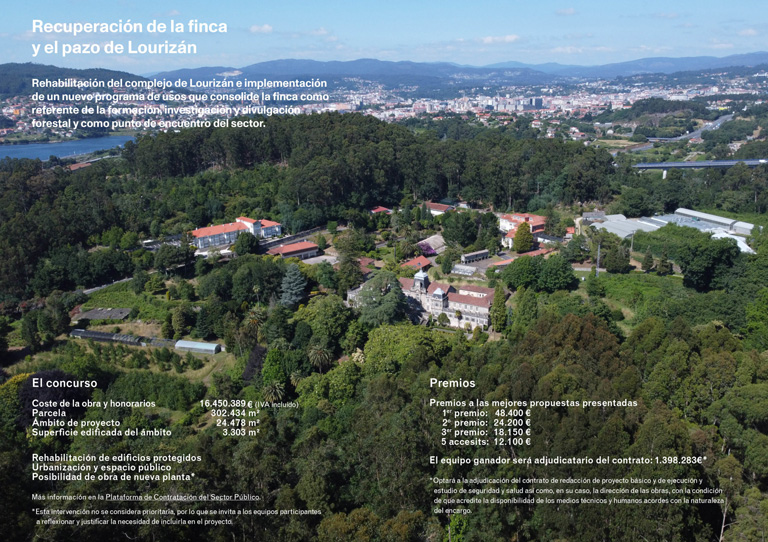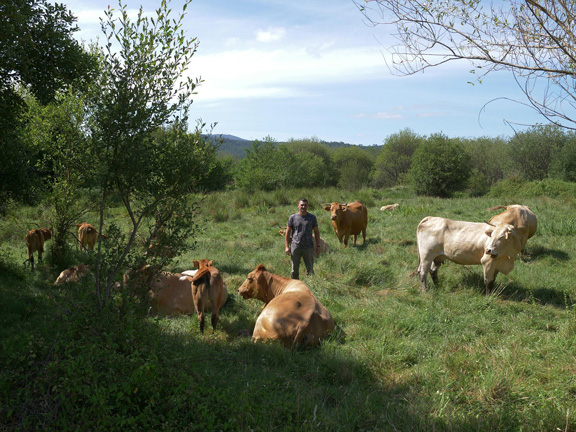David Chipperfield, the 2023 Pritzker Prize laureate, delivered the opening lecture at the annual Piñeiros 23 event hosted by Fundación Arume, which is dedicated to preserving the biodiversity of the Galician pine forests. In his speech, he shared his insights on sustainability, land management, the role of wood in architecture, and how all these elements intertwine with his altruistic work as the director of the RIA Foundation.

The acclaimed architect introduced the RIA Foundation as an initiative striving to “represent the interests of the Galician community, particularly concerning construction and the ecosystem”. Over the past seven years, his team has worked tirelessly for this community, aiming to understand where and how to address local issues that could be shaped into systemic attitudes, strategies, and regulations. While his analysis is focused on the Galician community, the lessons learned are applicable on a global scale.
The Foundation’s projects primarily concentrated on four key themes: traffic planning and its impact on public spaces, uncontrolled construction in natural areas, industrialization of coastal regions, and loss of identity. Regarding the latter strategic axis, Chipperfield emphasized the migration of younger generations, the proliferation of vacant buildings in populated areas, and the abandonment of villages.
“What we are less clear about is how these issues can be addressed and balanced. Increased awareness of climate change and sustainability allows us to emphasize these topics, which have a profound impact on our quality of life and the environment”, he explained. To delve into addressing these issues, he provided examples of two programs implemented by the RIA Foundation: the Lourizán complex and the Ecosocial Laboratory on the Barbanza Peninsula.
Lourizán, a model for the forestry industry
According to Chipperfield, the Lourizán complex is “a benchmark for the forestry industry in Galicia“. This year, an architectural competition was launched for its rehabilitation, as well as the implementation of a usage program to establish it as a space for research, dissemination, and a meeting point for the sector. He stated, “I believe this project instills confidence in the use of wood beyond production, also in environmental and social aspects”.
“This complex demonstrates how a solid strategy for the sector should be based on effective coordination among all stakeholders, articulating land areas for various uses, planning, economics, and education, among other purposes. Conceiving the forest chain as a whole allows us to redefine primary processes, develop industry, and design new solutions, but above all, it contributes to sustainable and diversified natural resource planning”, he concluded.

Barbanza Ecosocial Laboratory
“One of the complexities of the Galician forest is that 30% of it is community-owned, which motivated us to initiate the Barbanza Ecosocial Laboratory”, Chipperfield commented while introducing the second project.
“We were interested in how these communities were operating, and we studied them in collaboration with the University of Santiago and the Banco Santander Foundation. There, we understood the historical role of the people in rural areas in organizing the territory, based on circularity criteria and waste reuse. We realized the importance of multifunctionality in forest maintenance”, he explained.
What should the wood sector do in response to these modes of organization? “We can be deeply confident that the wood sector will play a much more significant role in our way of life. Not only in construction, where it will be highly significant, but also in other areas where we are seeking alternatives to plastics and materials derived from petrochemical processes”, he replied.

The architect pointed out that “we must stop viewing industries in general as simply extractive“. He argued that they should be measured by their social and environmental contributions “as an inherent part of their assessment”.
The Ecosocial Laboratory gains importance in this context for Chipperfield because “it is a principle that the entire sector should follow: to develop in a way that helps ensure the future of rural communities, providing them with more opportunities and jobs, especially for young generations”. He emphasized the need to focus on secondary transformations of raw materials: “In Galicia, forests cover more than 60% of the territory and employ only 10,000 people directly, while in tourism, there are 130,000 individuals”.
Expanding this growth, according to Chipperfield, “depends on a more dynamic link between the public and private sectors, especially in training. It is also necessary to consider forest management and maintenance, ensuring its economic and environmental future”.
He concluded his opening talk by encouraging the unlocking of “the great potential of the timber industry in Galicia”, considering “the safeguarding of a quality of life deeply rooted in the Galician community and historically dependent on its sustainable relationship with nature, which has proven to be a model for the future”.




